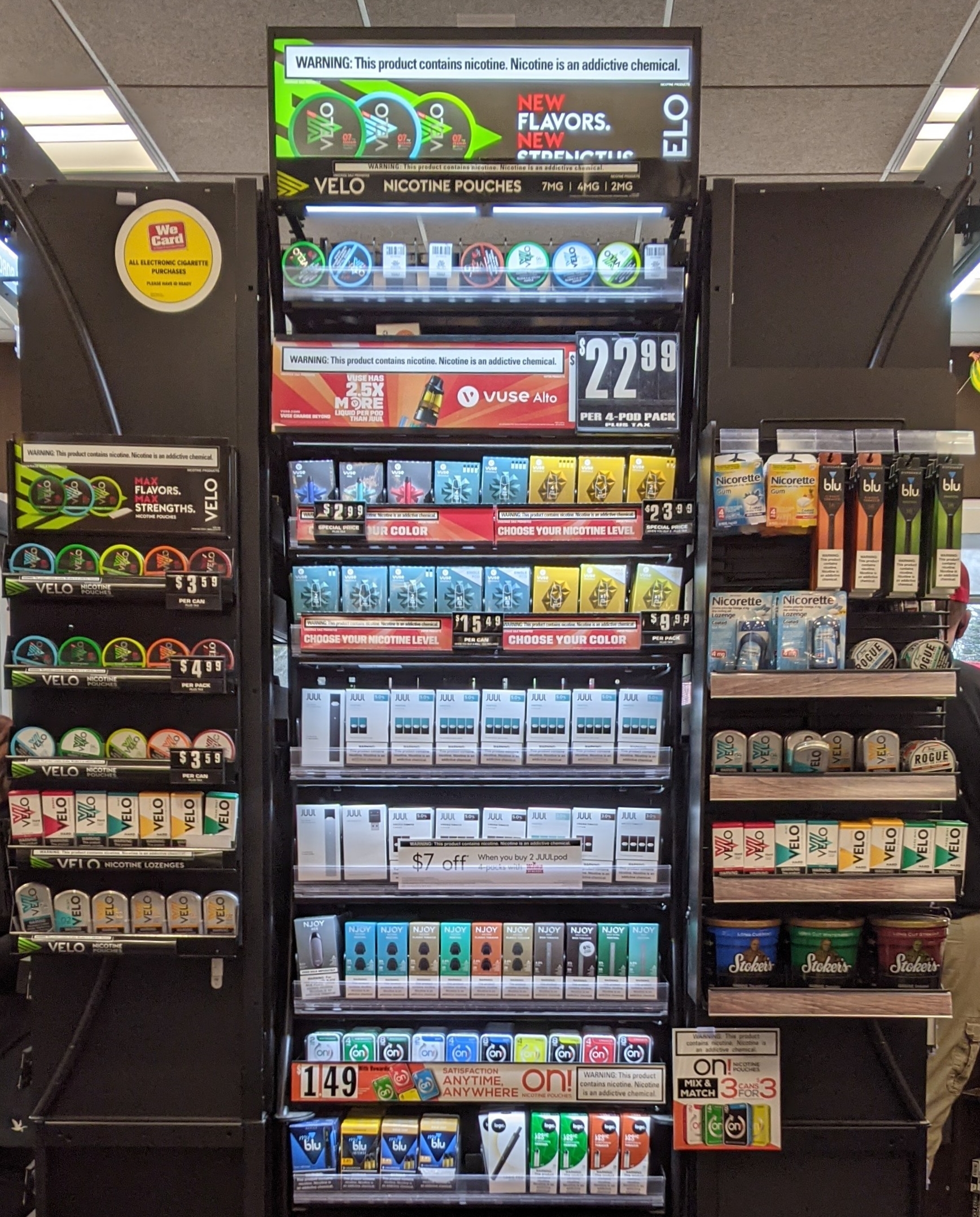Welcome to CounterTobacco.org’s “News and Research Roundup!” Each month we post a summary of the latest research, reports, and news stories on counteracting tobacco product sales and marketing at the point of sale (POS). Keeping up with what’s happening in the POS movement all across the country can help you choose policies and strategies that work best for your community. New research can help provide support for your work and evidence for the importance of the “War in the Store.” Have a story you don’t want us to miss? E-mail it to us!
New Research
- The Impact of Recent Tobacco Regulations and COVID-19 Restrictions and Implications for Future E-Cigarette Retail: Perspectives from Vape and Vape-and-Smoke Shop Merchants, International Journal of Environmental Research and Public Health
 This study surveyed vape and vape-and-smoke shop owners across six US metropolitan areas between March-June 2021 on their current and future promotional strategies and product offerings as well as their experiences with federal tobacco control polices (Tobacco 21 and e-cigarette flavor bans) and COVID-19-related orders. The retailers largely reported finding the federal policies and COVID-19 orders to be somewhat easy to understand and implement, and a majority reported that the consequences for violating tobacco regulations were severe. The survey also showed that vape shops are expanding their offerings, with 71.7% offering CBD vape products and 80% offering other CBD products. They are also increasing their online marketing through both social media and websites, with 65% maintaining a website, 71.7% using social media for promotion, and 26.7% offering online sales.
This study surveyed vape and vape-and-smoke shop owners across six US metropolitan areas between March-June 2021 on their current and future promotional strategies and product offerings as well as their experiences with federal tobacco control polices (Tobacco 21 and e-cigarette flavor bans) and COVID-19-related orders. The retailers largely reported finding the federal policies and COVID-19 orders to be somewhat easy to understand and implement, and a majority reported that the consequences for violating tobacco regulations were severe. The survey also showed that vape shops are expanding their offerings, with 71.7% offering CBD vape products and 80% offering other CBD products. They are also increasing their online marketing through both social media and websites, with 65% maintaining a website, 71.7% using social media for promotion, and 26.7% offering online sales.- Learn more about e-cigarettes at the point of sale.
- Inequalities in Tobacco Retailer Compliance Violations Across the State of Oklahoma, 2015-2019, Journal of Community Health
- An analysis of FDA compliance check data from 2015-2019 from Oklahoma found that tobacco stores were more likely sell to underage youth (a violation) than convenience stores, and supercenters and pharmacies had the lowest violations rates. While more than half of the tobacco retailers in the sample were convenience stores, they accounted for only 32.02% of locations ever having a violation, whereas while tobacco stores comprised 6.98% of the sample, they accounted for 38.31% of stores with violations. Independently owned retailers were also more likely to have a violation than chain retailers. Retailers in census tracts with high socioeconomic vulnerability were more likely to have a violation, as were retailers in census tracts with a high percentage of residents who speak English “less then well.” While more compliance checks occurred in urban areas, small towns and suburban areas accounted for more of the violations. Retailers located in an areas with a greater percentage of mobile homes and greater crowding were also more likely to have a violation, as were retailers located in areas with a high percentage of individuals without health insurance.
- Different Times Call for Different Measures: Using Retail Sales to Monitor the Tobacco Product Landscape, American Journal of Preventive Medicine
 This article describes the benefits of analyzing retail sales data to provide rapidly assess and provide information on the evolving tobacco marketplace. While type of scanner UPC data includes products purchased (with product name, brand, and flavor), price, store type where the products were purchased, and price promotion. While the data must be purchased from sources such has NielsenIQ or IRI, it is available weekly at national and subnational levels and can both provide trend data and allow researchers to compare across geographies. While no demographic information is provided with the data and it can be costly, it can serve as an important complement to other types of surveillance, especially for tracking emerging products.
This article describes the benefits of analyzing retail sales data to provide rapidly assess and provide information on the evolving tobacco marketplace. While type of scanner UPC data includes products purchased (with product name, brand, and flavor), price, store type where the products were purchased, and price promotion. While the data must be purchased from sources such has NielsenIQ or IRI, it is available weekly at national and subnational levels and can both provide trend data and allow researchers to compare across geographies. While no demographic information is provided with the data and it can be costly, it can serve as an important complement to other types of surveillance, especially for tracking emerging products.
- Ex ante evaluation of the impact of tobacco control policy measures aimed at the point of sale in the Netherlands, Tobacco Control
- A study of the future impacts of various tobacco control policy measures in the Netherlands found that “Although bans on tobacco displays, vending machines and sales in supermarkets substantially limit tobacco availability and visibility, a ban on tobacco sales in small outlets was predicted to contribute most to reducing tobacco outlet availability in numbers and density, and increasing the distance to outlets (proximity).”
- Learn more about regulating retailer density and proximity.
Reports:
- Ending the Sale of Flavored Tobacco – Protecting Public Health and Saving Lives, City Health & Campaign for Tobacco-Free Kids
Industry News
- Tobacco Companies Speak Out Against FDA Menthol Ban, National Association of Convenience Stores
- PMI in Talks to Acquire Swedish Match, CSP Daily News
- Zyn Launches Tobacco Flavoured Nicotine Pouches, Vaping Post
- Lucy Goods Submits Premarket Tobacco Product Applications for 42 Innovative Nicotine Products, PR Newswire
- Buffalo Next: 22nd Century Group has high hopes for low nicotine product, Buffalo News
POS Policy in the Media
- Vallarta Supermarkets will stop selling tobacco products, KFSN
- Potentially dangerous synthetic cooling agents are used at high levels in e-cigarettes and refillable vaping liquids, Medical Xpress
- Scotts Valley council bans sale of flavored tobacco, Santa Cruz Local
- Statewide campaign aims to keep youth from menthol-flavored tobacco, WAER
- Washington County voters uphold strict flavored nicotine ban, Oregon Live
- Califf Taps CDC Official to Lead FDA Center for Tobacco Products, Bloomberg
- NJ Could Ban Menthol Cigarettes Before FDA Decides on National Rule, NJ 101.5
Find more stories in last month’s News and Research Roundup.
Know of a story that we missed? Email us, and we’ll be sure to include it in next month’s roundup!


